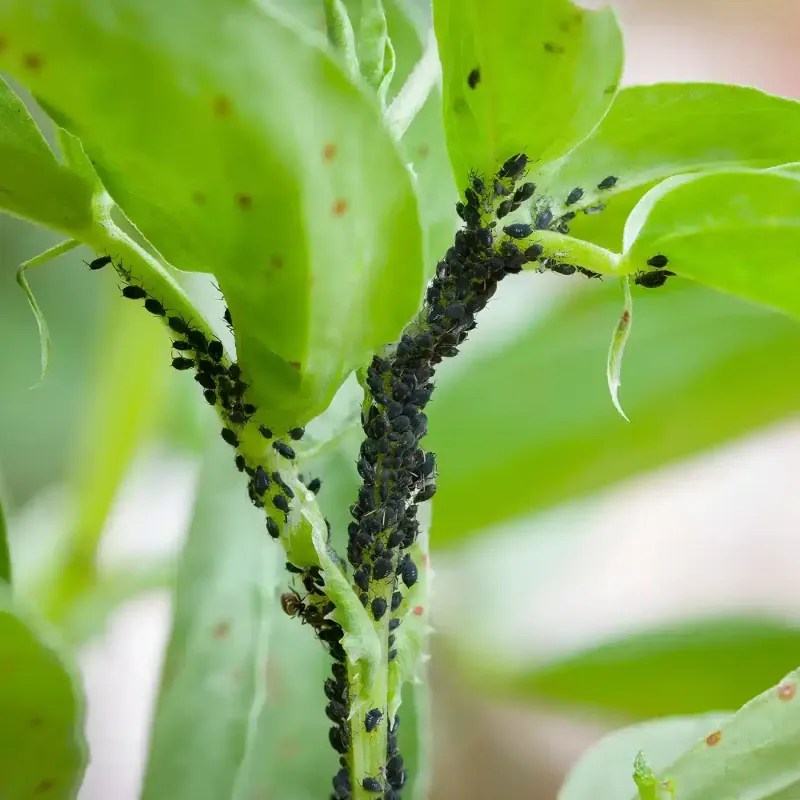Growing spinach at place can be a rewarding experience , specially when you ’re harvest fresh , nutritious leave flop from your garden . This leafy special K is not only versatile in the kitchen but also comparatively wanton to grow , making it a great choice for home gardener . However , like any plant , it thrives best when give the right conditions and care .
To help you grow Spinacia oleracea successfully , there are a few key practices to keep in thinker , from dirt preparation to harvest timing . By watch over these best practices , you ’ll be able to enjoy a steady supplying of homegrown spinach , ensuring it ’s goodish , rich , and ready to add to your favorite dishes .
Choose the Right Variety
Selecting the appropriate Spinacia oleracea mixed bag is important for your garden ’s success . Savoy prickly-seeded spinach , with its crinkly leaves , is hardy and resistant to cold temperatures . Semi - Savoy miscellany mix the boldness of Savoy with the smoothness of bland - leaf types . placid folio spinach is easier to cleanse and ideal for straightaway - growing bike . moot your clime and the amount of sunlight available in your garden . unlike diverseness may thrive advantageously in specific circumstance , so choose accordingly . This thoughtful survival of the fittest process insure that your prickly-seeded spinach plants will prosper , providing you with abundant , delicious leaves to delight .
Optimize Soil Conditions
Healthy soil is the backbone of any successful spinach harvest . Spinacia oleracea thrives in well - draining , fertile soil fat in organic matter . A pH level between 6.0 and 7.0 is ideal for optimal growth . Adding compost or aged manure improves soil structure and nutrient content . Regularly quiz your filth and amend it with calcined lime or S to maintain the desired pH balance . Proper dirt preparation not only boosts spinach growth but also enhances flavour and grain . By foster your land , you ’re setting the stage for a vivacious and productive spinach patch that rewards your efforts .
Proper Spacing and Sowing
Spacing plays a vital role in the healthy development of spinach plant . implant your seeds roughly 12 inches apart in run-in to allow for ample room for growth . This prevents overcrowding , reducing the risk of disease and advertize robust leaf output . Sow seeds about half an inch inscrutable , ascertain consistent moisture during sprouting . By following these spacing guideline , you create an environment where each prickly-seeded spinach works can prosper . The result is a lush , immature garden filled with vigorous plant that are easy to harvest and enjoy , ply you with fresh , homegrown spinach all time of year long .
Water Consistently
Consistent watering is essential for good for you spinach plant growth . Spinach requires stiff wet , especially during dry spells , yet detest waterlogged roots . Water your works early in the morning to shrink evaporation and allow leaf to dry out throughout the day . This recitation minimizes fungal disease and promotes strong root system . Consider using a soaker hose or drip irrigation for efficient water delivery . Keep the soil evenly moist , but avoid over - watering . Mastering the art of lachrymation ensures your spinach remains vivacious and productive , quick to sum freshness and flavor to your meal .
Control Weeds Naturally
Weeds contend with spinach plant for nutrient , water , and sunshine , so keeping them in cheque is vital . manus - pulling is an efficacious method acting for little gardens , allowing you to place undesirable plants without disturbing the spinach . Mulching with straw or organic matter suppresses weed development while hold grunge moisture . Stay vigilant , specially during the early growth stages , to prevent skunk from taking appreciation . By care weeds by nature , you produce a booming environs where your Spinacia oleracea can flourish unimpeded . This deliberate aid interpret into sizable , more productive plants that repay your horticulture efforts .
Protect from Pests
Pests can promptly damage your spinach crop if not properly managed . rough-cut threats include aphids , leaf miner , and slugs . Employ natural remedies like neem oil , mash eggshells , or diatomaceous dry land to discourage these encroacher . promote beneficial insects like ladybird to patrol your garden , keeping gadfly population in check-out procedure . on a regular basis inspect your plant for signs of plague , and act fleetly if need . Implementing these protective measures insure that your Spinacia oleracea remain intelligent and bountiful , allowing you to bask a steady supply of fresh leaves without resorting to harmful chemicals .
Use Fertilizers Wisely
Fertilizing Spinacia oleracea thoughtfully boosts development and flavor . Use organic fertilizers rich in nitrogen to support leafy development . practice a balanced fertilizer at the beginning of the growing season , then side - wearing apparel with compost or well - rotted manure as needed . stave off over - fertilizing , which can lead to excessive leaf growth and reduced taste quality . on a regular basis supervise plant health , adjusting fertiliser software base on growth and grease conditions . This careful , measured approach see that your Spinacia oleracea plants are both nutritious and delicious , provide you with a bountiful harvest of vibrant greens .
Rotate Crops Yearly
Crop rotation is a crucial practice for keep filth health and preventing disease . Rotate spinach with non - relate crops such as beans or tomatoes each class to disrupt pest and disease bicycle . This praxis reduces soil nutritive depletion and promotes balanced growth . view a three - twelvemonth rotary motion plan to maximise benefits . By turn out crops , you raise soil natality and prevent the buildup of harmful pathogens , leading to healthy spinach plants . This thoughtful planning translate into a more sustainable and productive garden , allowing you to enjoy fresh , homegrown spinach for year to come .
Harvest at the Right Time
Timing your spinach harvest is key to achieving the best flavor and grain . crop leaves when they are unseasoned and tippy , usually around 6 - 8 weeks after planting . cutting leaves from the out part of the plant , allowing the centre to continue growing . This method encourage continuous production throughout the season . Early morning is the idealistic time to glean , capturing the crispness and coolness of the parting . right harvest home techniques secure that you enjoy spinach plant at its peak , adding a smart , alimentary touch to your culinary creations .
Practice Succession Planting
Succession planting store your spinach supply reproducible and fresh . By plant seed every few weeks , you ensure a continual crop throughout the growing time of year . This method prevent overabundance at once and expand your spinach use . design your planting based on weather and spring up conditions to maximize winner . Succession planting allows you to adjust to seasonal changes , ensuring a steady supply of fresh parting . With this strategy , your garden becomes a dynamic , ever - acquire source of nourishment , offering the gratification of regular , homegrown produce .
Implement Shade Solutions
prickly-seeded spinach prefers cooler temperature , so protecting it from intense Lord’s Day is of the essence . Use shade fabric or strategically embed taller crop nearby to shield your spinach from rough shaft of light . This reduces heat tenseness and protract the growing time of year , particularly in warmer climate . By creating a easy microclimate , you advertize healthier , more resilient plant . Shade solution also aid hold soil wet , further enhancing growth . With careful planning , you may civilize a cool , leafy oasis that thrives even under thought-provoking conditions , yield a scrumptious crop for your board .
Monitor Temperature Extremes
Temperature plays a pregnant role in spinach plant refinement . Spinach expand in cooler conditions , with optimal growth occurring between 50 ° F and 70 ° F . Monitor temperature closely , using row cover or cloche to protect plants from unexpected cold snaps or heatwaves . Adjust planting schedules to adjust with seasonal change , ensuring that your spinach plant grows under ideal conditions . By abide attuned to temperature fluctuations , you create a unchanging environment that fosters robust growth and resiliency . This watchfulness give off with a garden full of lush , vibrant prickly-seeded spinach , ready to relish in your favorite peach .
Use Companion Planting Strategies
associate planting enhances spinach plant increment by fostering good relationships among plants . Pair spinach with crop like radishes , strawberries , or pea to hike energy and deter cuss . These companions can improve soil conditions , attract beneficial insects , and create a balanced ecosystem . Plan your garden layout to take advantage of these synergies , optimizing blank space and resources . By integrate companion plants , you cultivate a diverse and thriving garden surround , where spinach can flourish course . This proportionate planting approach enrich your garden , yielding a plentiful and healthy spinach harvest .
Manage Diseases Proactively
Spinach is susceptible to diseases like pubescent mildew and leafage spot , so proactive management is key . Regularly inspect leaves for any discolored or malformed areas . Remove affected plant promptly to prevent disease scatter . Maintain good air circulation and keep off overhead watering to subdue moisture - relate issues . Implementing resistant varieties and rotate crop also minimizes disease danger . By lead these preventive measures , you ensure the vitality and productivity of your prickly-seeded spinach plants . This diligent care leads to a garden teem with healthy , robust greens , quick to provide nutriment and delectation .


© Gardener’s Path


© mindfulfarmerarkansas


© Rural Sprout


© RHS


© The Spruce


© Jack

© Lawn Synergy


© Thrive Lot


© Gardener’s Path


© Gardener’s Path


© Square Foot Gardening


© Next Big Thing AG


© Melissa K. Norris


© Envirevo Agritech